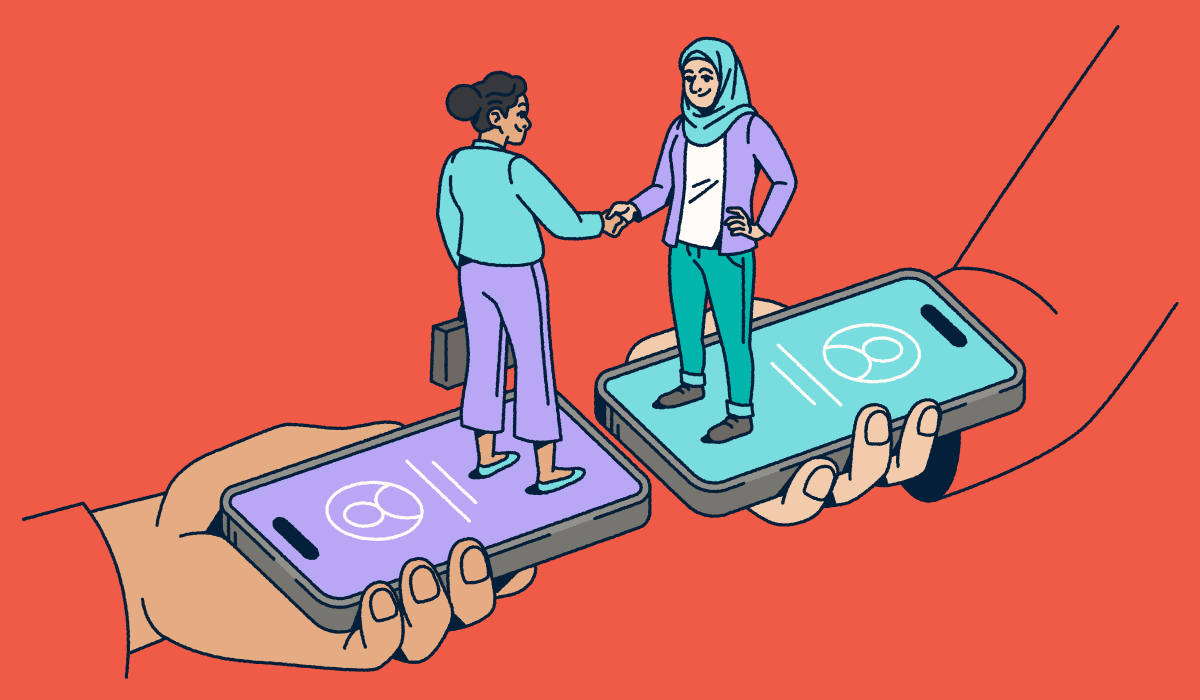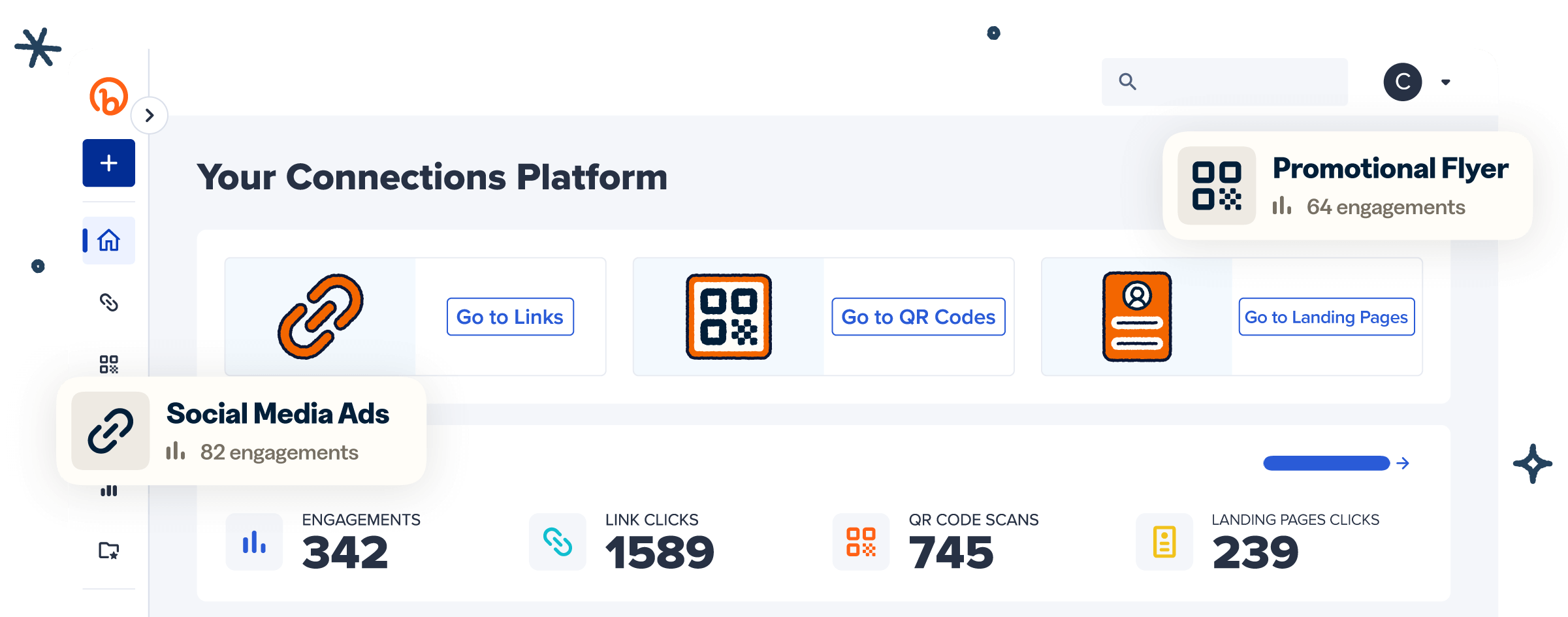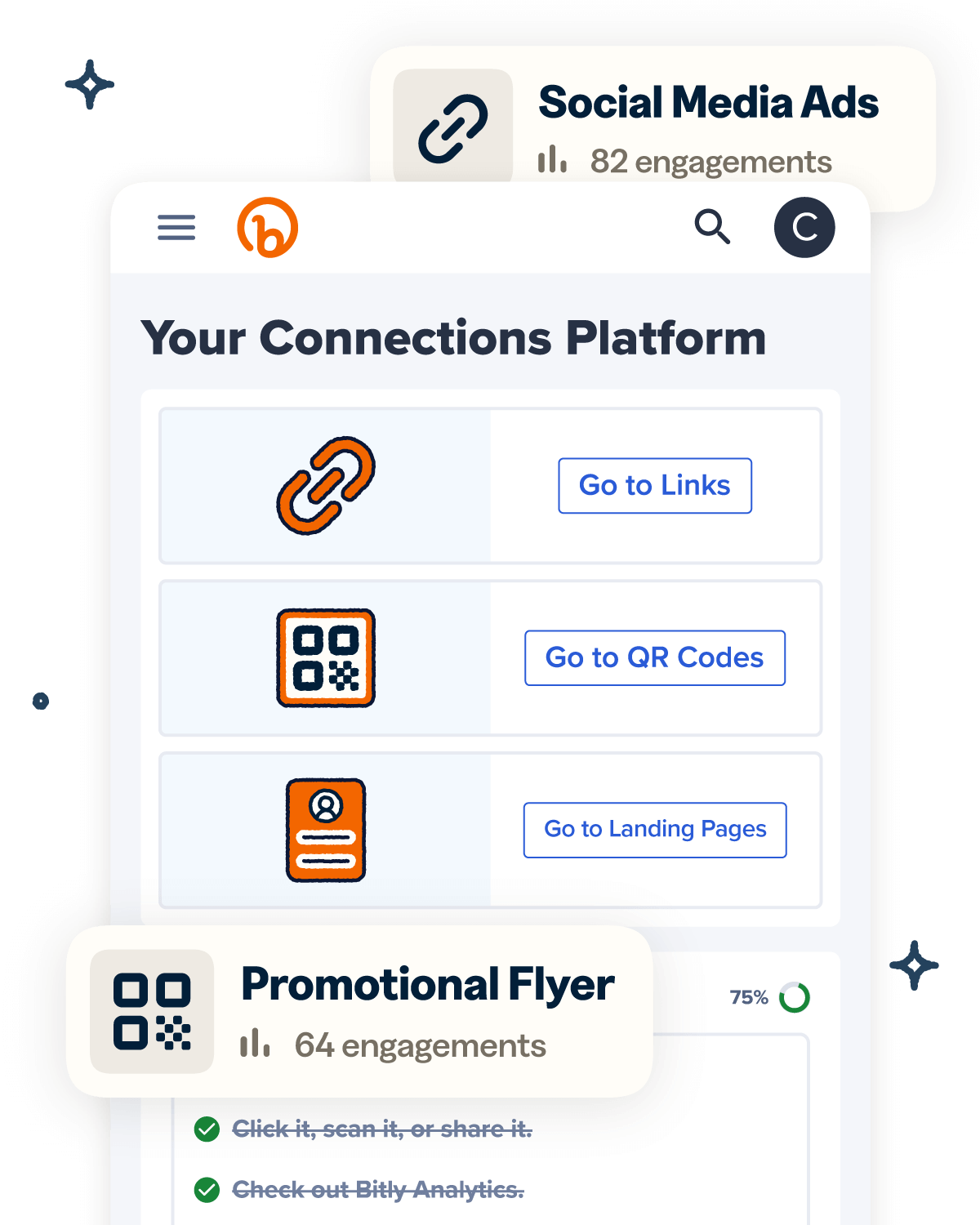Traditional business cards are easy to forget—and even easier to lose. In a world where networking happens both in person and online, professionals need a smarter, more sustainable way to share contact information.
That’s why many are making the switch to digital—putting their details just a scan or click away with tools like QR Codes and short links. These virtual cards are designed for how we connect today: fast, flexible, and often remote. They’re also more customizable, easier to keep up to date, and better for the planet than their paper counterparts.
Whether you’re heading to a conference, job fair, or coffee chat, we’ll show you how to create and customize a digital business card that works wherever you network.
Note: The brands and examples discussed below were found during our online research for this article.
Why professionals are switching to paperless business cards
Business card sharing has been a professional staple for decades. But as networking shifts online, many are moving toward paperless alternatives that let them share their info on the spot, often through a website or LinkedIn profile.
So, what is a digital business card? It’s a mobile-friendly webpage with the contact details you’d typically print on a physical card (plus anything extra you want to share) accessible via a link or by scanning a QR Code.
Here are a few key reasons why virtual cards are becoming the go-to option for modern networking.
Convenience and instant sharing
Electronic business cards make it quick and easy to share your professional details. Compared to paper versions, they’re far less likely to get lost after a networking event or buried in a pile of handouts.
However, their real strength is functionality. With a quick QR Code scan or short link click, your details are delivered instantly, helping you build and nurture new connections without the usual friction.
Sustainability and reduced waste
Paper business cards may be small, but the environmental toll of producing and discarding them adds up fast. In fact, paper production is one of the top five most energy-intensive industries. Since most business cards are tossed shortly after being handed out, they quietly contribute to a much larger waste problem.
Digital business cards offer an eco-friendly alternative. By switching to a paperless option, professionals can reduce waste, lower their environmental footprint, and support more sustainable networking practices without sacrificing convenience or professionalism.
Cost-effective and long-lasting
Physical business cards need to be updated and reprinted every time your job title changes, your branding evolves, or you want a fresh look. Over time, those printing costs can add up, especially if you’re making updates frequently.
Digital business cards are a smarter investment. You can refresh the design or update your details anytime—no trip to the print shop needed. Plus, they don’t tear, fade, or get lost in the shuffle, making them a more durable and budget-friendly option in the long run.
How do you make a paperless business card?
Ready to go digital? Here’s a step-by-step guide to help you create a paperless business card that’s professional, easy to share, and tailored to your networking style.
Step 1: Choose the right digital format
There are many types of digital business cards, so you’ll need to choose the one that fits your industry and goals. One simple option is to link a QR Code or short URL to your existing website or LinkedIn profile. This works well if you already have those assets and want a quick way to share them.
For more customization, consider using a digital business card solution. These platforms offer card templates that make it easy to design the best digital business card for your brand. You can highlight your most important details (name, phone number, email, website, social links) and ensure everything looks consistent and professional.
With Bitly’s digital business cards, you can go a step further by creating a custom landing page that includes your logo, headshot or brand photos, and color scheme. And since 63% of people say a high-quality business card leaves a strong first impression, it’s worth investing the time to create a standout card design.
Once your card is ready, sharing is seamless. When someone scans your QR Code or clicks your short link, they can instantly view and save your contact info right to their phone. It works seamlessly across both iPhone and Android, making it easy for new connections to follow up later.
Step 2: Create a short, branded link for easy sharing
After designing your virtual business card, generate a short, branded link to make sharing quick and easy. These condensed URLs are perfect for places with limited character space like text messages, social media bios, or email signatures. Customizing your link also helps reinforce your brand and makes your URL look more polished and trustworthy.
If you’re using Bitly Pages to build your card, you’ll automatically receive a corresponding short link. If you’re using another platform, you can paste your card’s link into the Bitly URL shortener to instantly generate one. Depending on your plan, you can even customize the domain and back half to better reflect your brand or name.
For example, instead of a generic link like:
bit.ly/3XyZ89a
you could create something polished and professional like:
bit.ly/JohnSmith or your.brand/connect
Step 3: Generate a QR Code with Bitly
You can also use QR Codes for contactless business card sharing. If you’re at a networking event and want to share your contact details, just open a QR Code on your phone for others to scan. Some people even print QR Codes on paper business cards—an effective hybrid if you’re not ready to go fully digital.
With Bitly Codes, you can create QR Codes that match your branding. Customize the patterns, corner shapes, and color scheme, and even add your logo, a frame, and a call-to-action (CTA). These QR Code customization features help your card look more professional and aligned with your identity—no generic designs or off-brand styles.
Plus, a Bitly Code lets you share far more than what fits on a physical card, from social media links and portfolios to product pages and contact forms.
Step 4: Test and distribute your paperless business card
Before your next networking event, take a moment to test your digital business card. Scan it with both iOS and Android devices to make sure it functions properly and directs to the right page. It’s a small step that helps you avoid awkward tech hiccups when you’re trying to make a good impression.
You can also use Bitly Analytics to track your smart business card’s performance. Monitor QR Code scans and link clicks in real time to gauge interest and engagement. These insights can help you refine your follow-up strategy or tweak your card for future events.
Best ways to use paperless business cards in networking
One of the biggest benefits of digital business cards is their versatility. Whether you’re meeting in person or online, there are plenty of creative ways to share your details and grow your network.
Adding QR Codes to presentations and virtual meetings
Speaking at a conference or hosting a webinar? Make it simple for attendees to connect with you by displaying your business card QR Code.
If you’re presenting in person, include the code on a slide deck or post it on signage near the stage. If you’re presenting virtually using a platform like Zoom or GoToWebinar, consider adding the QR Code to your virtual background (just be sure it’s clearly visible and easy to scan).
Sharing your card during these speaking engagements doesn’t just make a good impression, but it also adds credibility and gives your audience a direct way to follow up after the session.
Including short links in email signatures and social media bios
Networking isn’t limited to in-person events anymore. Today’s professionals often rely on digital channels like email, LinkedIn, and X (formerly Twitter) as a primary way to connect. Many cite the ease of participation and lack of financial barriers as top reasons for networking online.
To share your digital business card across these platforms, include a short link in your email signature or social media bio. These compact URLs are space-efficient and easy to remember, making them perfect for digital communication.
For an added layer of polish, use a branded short link. Customizing the domain and back half helps the link feel more professional and reinforces your personal or business brand.
Printing QR Codes on event badges and promotional materials
Attending a conference or trade show? Add a QR Code to printed materials like name badges, brochures, or table signage to make networking effortless.
This approach is especially helpful for small businesses: Your QR Code can double as a lead generation tool, directing prospects to all your key info with a single scan. Whether they’re learning more about your services or following up later, your digital card makes it simple.
Be sure to use a Dynamic QR Code so you can update your contact info later without generating a new code or reprinting anything. That way, your printed materials stay useful across multiple events or campaigns.
Upgrade your networking with paperless business cards
Paperless business cards make networking more efficient, memorable, and sustainable. They’re easier to share, less likely to get lost, and help foster stronger follow-ups and long-term professional connections, whether you’re meeting virtually or in person.
The Bitly Connections Platform gives you everything you need to create standout digital business cards for smarter networking. Use Bitly Pages to build a branded, mobile-friendly card and share it anywhere using the Bitly Link you create during the process. Customize your card to match your brand, update contact details anytime, and track engagement with built-in analytics—all from one place.
Ready to upgrade your networking strategy? Sign up for Bitly to create and share your digital business card today.




